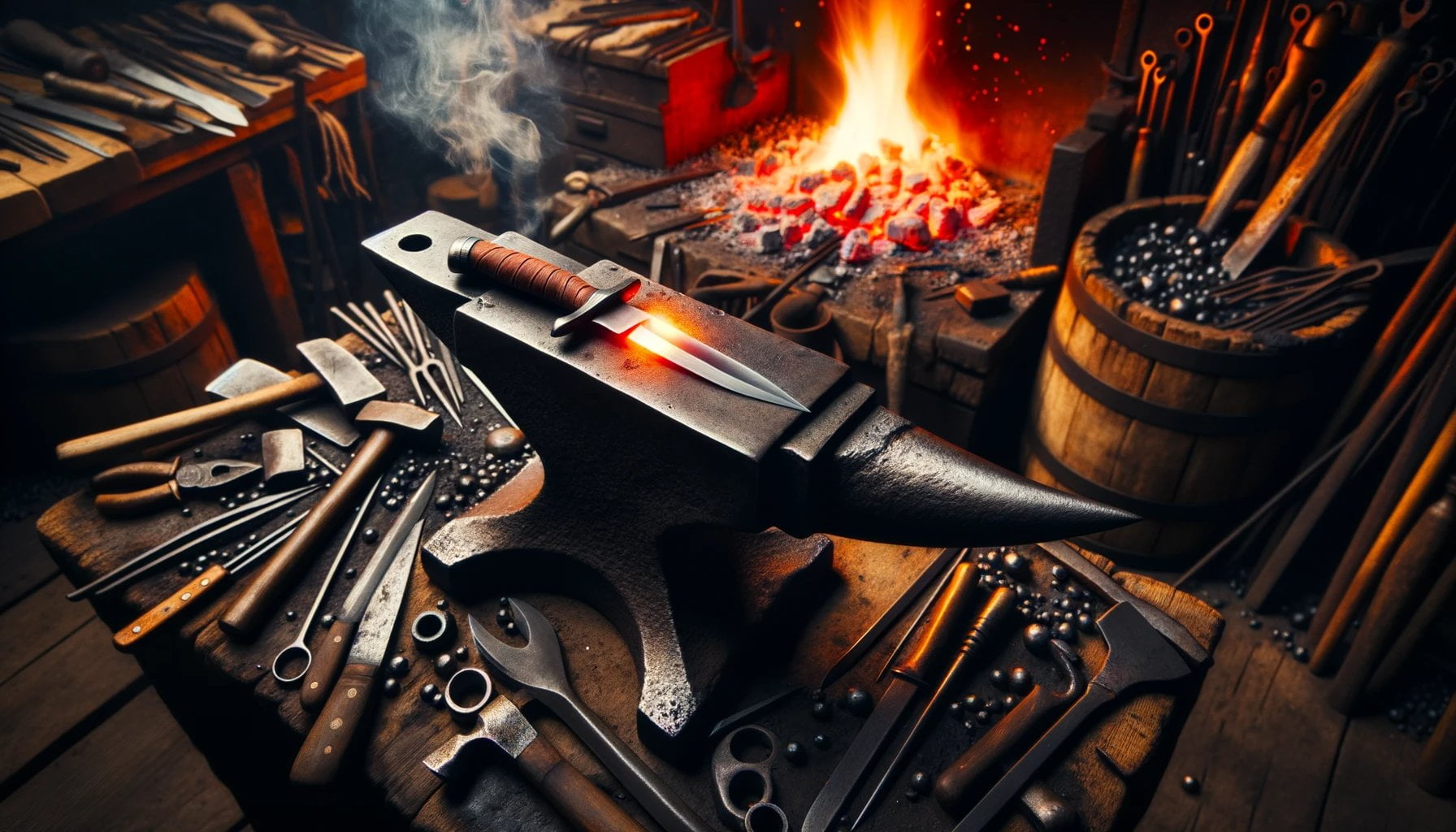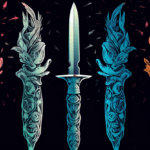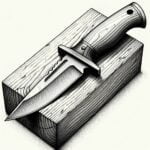What is a seax knife? This age-old question has intrigued historians, collectors, and enthusiasts alike, as its origins trace back to the early medieval era. With a reputation for being both a formidable weapon and a practical tool, the seax knife has captivated the minds of those with an affinity for historical culture and craftsmanship. In this article, we will delve into the rich history of the seax knife, uncover its various uses throughout time, and explore its enduring relevance in the modern world. Join us on a journey to discover the secrets and applications of this remarkable blade.
What is a Seax Knife?
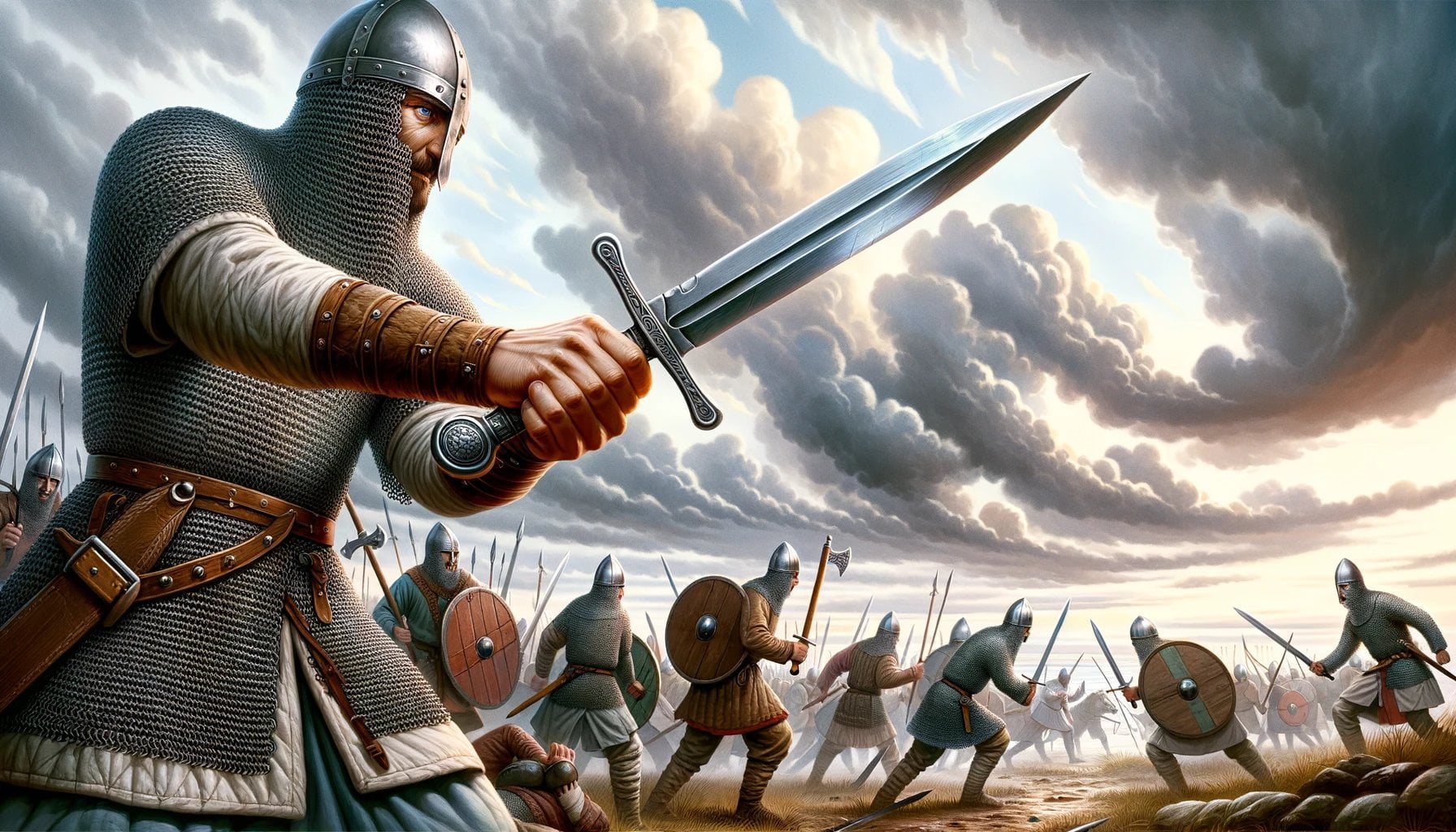
If you’re interested in knives, history, or both, then you’ve probably come across the term “seax knife” at some point. But what exactly is a seax knife? Well, let’s dive into the fascinating world of this ancient and versatile weapon.
The term “seax” or “sax” is derived from an old English or Anglo Saxon word for knife. Seaxes were long iron knives with a single blade and were popular during the Viking Age, not only in Scandinavia but also in various European countries. These knives were not only practical tools but also symbols of status and power.
One of the most intriguing aspects of seax knives is their craftsmanship. The blades were often adorned with grooves, inlaid with precious metals, or even inscribed with intricate runes. Each seax knife had its own unique design, reflecting the artistry and cultural significance of the people who wielded them.
Seaxes varied in size, ranging from a few inches to forms that were sword length. Their versatility allowed them to be used as small swords, knives, or daggers. The Germanic peoples of the Migration Period and the Early Middle Ages, especially the Saxons, were known for their affinity for the seax knife.
Imagine yourself holding a seax knife. You’ll notice that it typically has a tang in the centerline of the blade, inserted into an organic hilt, and a large single-edged blade. This design not only provides balance but also ensures a secure grip during use. The seax knife was all about functionality, as it was meant to be a reliable tool in various situations.
Now that we’ve explored the historical significance of the seax knife, let’s delve into its modern applications. In today’s world, the seax knife continues to capture the imagination of enthusiasts and collectors alike. Its unique design and historical value make it a sought-after item for anyone interested in traditional weaponry and craftsmanship.
With its versatility, a seax knife can be used for a range of activities, such as camping, survival training, bushcraft, and even hunting. Its long blade provides excellent cutting power, making it ideal for tasks that require precision and strength. Whether you need to carve wood, prepare food, or defend yourself in the great outdoors, a seax knife is a reliable companion.
In conclusion, the seax knife holds immense historical significance and continues to find relevance in the modern world. Its craftsmanship, design, and versatility make it a fascinating tool to explore. So, whether you are a knife enthusiast, a history buff, or simply curious about ancient weaponry, the seax knife is an intriguing topic worth delving into.
Table:
| Key Points | Details |
|---|---|
| Usage | Versatile tool for camping, survival training, bushcraft, and hunting. |
| Design | Long blade with a tang in the centerline and an organic hilt. |
| Historical Significance | Popular during the Viking Age and among the Germanic peoples of the Migration Period and the Early Middle Ages. |
| Craftsmanship | Blades often adorned with grooves, inlaid with precious metals, or inscribed with runes. |
| Size Variation | Ranging from a few inches to forms that were sword length. |
| Modern Applications | Camping, survival training, bushcraft, hunting, and more. |
Whether you’re intrigued by the seax knife’s impressive history, fascinated by its craftsmanship, or simply appreciate its practical applications, the seax knife is an extraordinary tool with a rich and storied past. So, why not add this versatile piece of history to your collection or take it along on your next outdoor adventure? The seax knife is definitely a blade with a cutting edge that transcends time.
Ancient daggers have always fascinated historians and collectors alike. If you want to explore the world of these intriguing weapons, check out our collection of ancient daggers at ancient-daggers. Discover the craftsmanship and history behind these remarkable artifacts!
Uses and Functions of the Seax Knife
The seax knife, originating from northern Europe and favored by the Saxons, Vikings, and Germanic tribes, holds a significant place in history. It was not only a utility camp work tool and a staple on board ships, but also the blade shape of choice for the Vikings. With its various sizes and styles, ranging from a few inches to sword length, the seax knife served multiple purposes and held great importance in the daily lives of its users.
A versatile tool for everyday tasks
One of the primary uses of the seax knife was for practical tasks. It served as a reliable tool for hunting and dressing animals, cutting ropes, and crafting essential items. The long, side-edged blade of the seax allowed for precision cutting and provided the necessary strength to tackle various materials.
A symbolic weapon of power and status
Beyond its practicality, the seax knife held symbolism and represented power and status. Adorned with unique designs, such as grooves, precious metal inlays, or inscribed runes, the seax showcased the craftsmanship and wealth of its owner. It became a coveted item and a means of displaying one’s social standing in the community.
A weapon for close combat
In addition to its utilitarian uses, the seax knife was also a formidable weapon for close combat. Some seaxes were long enough to be called shortswords and were effectively used in battle. The versatility of the seax allowed its wielder to engage in both thrusting and slashing movements, making it a versatile weapon in skirmishes and hand-to-hand combat.
Modern applications of the seax knife
While the historical significance of the seax knife cannot be denied, its usefulness extends to modern times as well. Today, seax knives are sought after by outdoor enthusiasts for camping, survival training, bushcraft, and hunting. With their long blades and excellent cutting power, seaxes are well-suited for precision cutting and general wilderness tasks.
Incorporating the seax knife in outdoor activities allows enthusiasts to connect with history and experience the craftsmanship that has stood the test of time. Its unique design, including a central tang and an organic hilt for balance and grip, ensures that the seax knife remains a reliable and functional tool in various rugged environments.
In conclusion, the seax knife encompasses both historical significance and modern applications. From its origins as a practical work tool to its symbolic representation of power, the seax has captivated the imagination of knife enthusiasts and history buffs alike. Whether used for everyday tasks or cherished as a collectible, the seax knife continues to hold a timeless appeal for those who appreciate its craftsmanship and versatile functionality.
Craftsmanship and Manufacturing Techniques of the Seax Knife
The craftsmanship and manufacturing techniques behind the creation of a seax knife are crucial to its functionality and historical significance. In this section, we will dive into the intricate details of how these knives were made, exploring the materials used, the forging process, and the unique features that set the seax knife apart.
The Art of Forging
Forging is at the heart of the seax knife’s craftsmanship. In ancient times, skilled blacksmiths played a vital role in creating these versatile tools. The process involved heating iron or steel to high temperatures and carefully shaping it into the desired blade shape. This technique ensured the blade’s strength, durability, and sharpness.
To begin the forging process, the blacksmith would heat the metal in a forge until it reached a malleable state. This allowed them to shape and manipulate it with precision. The seax knife’s single cutting edge was carefully formed during this stage, distinguishing it from other knife types.
After shaping, the blade was heated once again and rapidly cooled in a process called quenching. This step hardened the metal and gave the seax knife its impressive cutting ability. The quenching process could vary, resulting in different levels of hardness and tempering, which affected the knife’s overall performance.
Materials Used
The seax knife was typically made using high-quality iron or steel. Iron was plentiful and commonly used during the early Middle Ages, while steel became more popular as advancements in metallurgy occurred. Both materials provided the necessary strength and durability required for the seax knife’s various tasks.
In some cases, seax knives were adorned with precious metals, inlaid patterns, or inscribed runes, showcasing the craftsmanship and artistry of the maker. These decorative elements were often reserved for higher-status individuals, emphasizing the knife’s symbolic significance as a display of wealth and power.
Blade Design and Features
One of the distinguishing features of the seax knife is its single-edged blade. Unlike other knife types that have a double-edged blade, the seax knife focuses its cutting power on one side. This design allowed for efficient cutting and slicing, making it an invaluable tool in various situations.
Seax knives also varied in size, ranging from shorter blades that could be called daggers to longer blades that approached the length of a sword. This versatility ensured that individuals could choose the appropriate seax knife for their specific needs, whether it be hunting, combat, or everyday tasks.
The craftsmanship and manufacturing techniques of the seax knife are undoubtedly fascinating. From the intricate forging process to the choice of materials and unique blade design, every aspect of creating a seax knife required skill and expertise. Understanding these techniques allows us to appreciate the historical significance and multifaceted nature of the seax knife, while also providing insights into its modern applications in camping, survival training, bushcraft, and hunting.
Think of the seax knife as both a testament to ancient craftsmanship and a versatile tool that continues to captivate knife enthusiasts and history buffs alike. Its design and manufacturing techniques have stood the test of time, making it a truly remarkable piece of weaponry.
Modern Applications and Popularity of the Seax Knife
When it comes to practical and versatile tools, few can compare to the seax knife. This ancient weapon, popularized during the Viking Age, continues to captivate the imagination of knife enthusiasts and history buffs alike. But what exactly are the modern applications and reasons behind the enduring popularity of the seax knife?
Connecting with History while Outdoors
One of the main reasons the seax knife remains in high demand is its connection to history. For those who appreciate the craftsmanship and design of traditional weaponry, the seax knife offers a tangible link to the past. Incorporating this tool into outdoor activities such as camping, survival training, bushcraft, and hunting allows enthusiasts to experience the reliability and functionality that warriors of old once relied upon.
Utility and Versatility
In addition to its historical significance, the seax knife is prized for its practicality and versatility. The long iron blade provides excellent cutting power, making it ideal for precision and strength. This makes it a valuable tool for tasks such as hunting, dressing animals, cutting ropes, and crafting essential items.
Reliable and Functional Design
The seax knife’s design, with a single cutting edge and a tang in the centerline of the blade, offers optimal balance and a secure grip. This ensures that the knife can handle a wide range of tasks with ease. Whether you’re carving wood or preparing a meal, the seax knife’s reliable and functional design will not disappoint.
Outdoor Enthusiasts’ Favorite
The seax knife has gained popularity among outdoor enthusiasts for its durability and ability to withstand various outdoor conditions. Made from high-quality iron or steel, this knife is built to last. Whether you’re braving the elements on a camping trip or embarking on a wilderness adventure, the seax knife is a trusted companion that won’t let you down.
Simplicity and Sought-after Craftsmanship
Despite its historical significance, the appeal of the seax knife lies in its simplicity. Its design focuses on efficiency and effectiveness, without unnecessary embellishments. However, that doesn’t mean the seax knife lacks craftsmanship. Blacksmiths played a vital role in creating these knives through the intricate process of forging. Decorative elements such as precious metals, inlaid patterns, or inscribed runes were sometimes added to showcase the skill and artistry of the craftsmen.
In conclusion, the seax knife has undoubtedly stood the test of time. Its historical significance, practicality, versatility, and sought-after craftsmanship make it a cherished tool among outdoor enthusiasts and history aficionados. Whether you’re seeking a reliable cutting tool or a tangible connection to the past, the seax knife is sure to meet your expectations. So why not add this versatile blade to your collection and experience its timeless appeal for yourself?
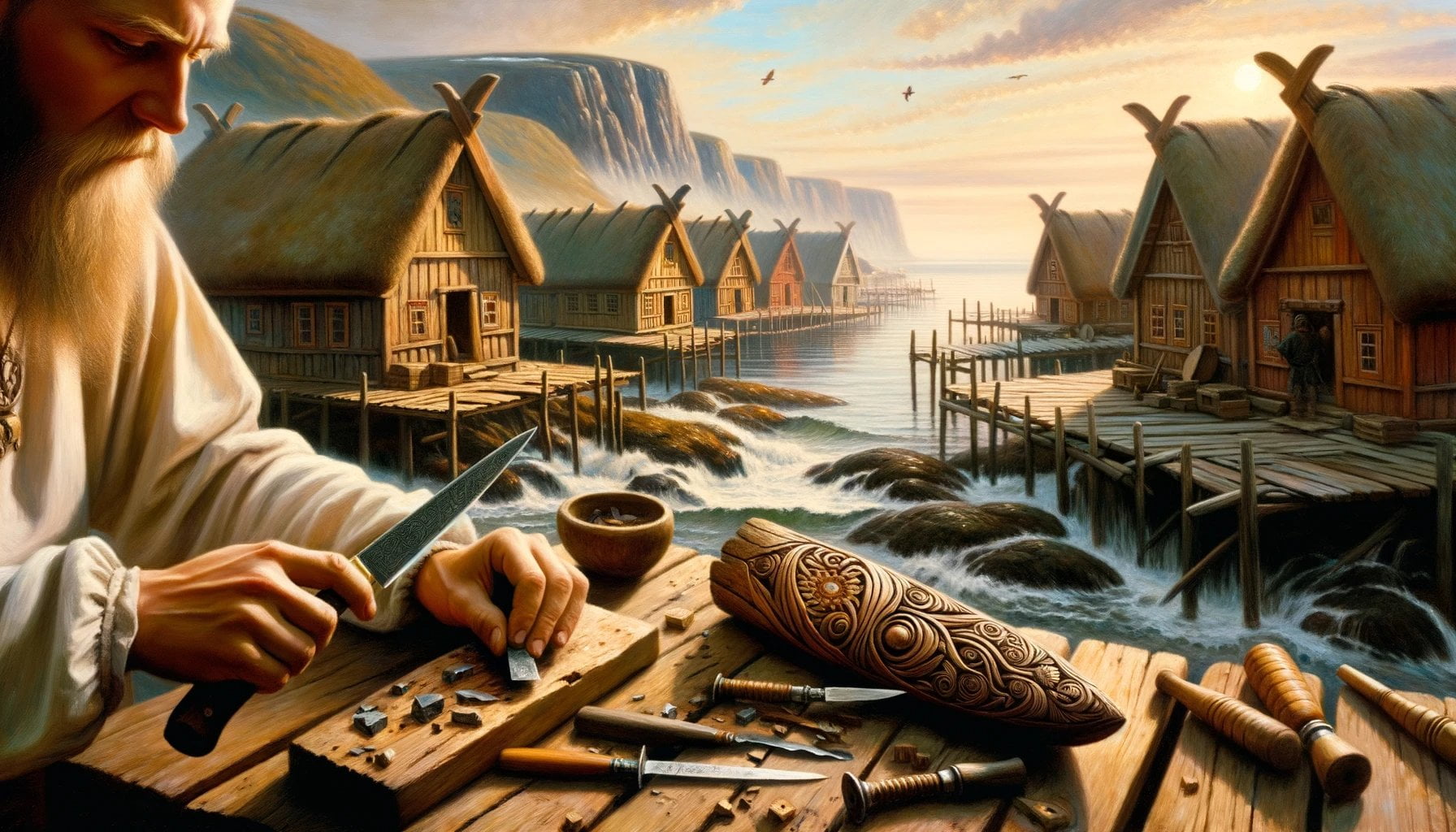
FAQ
Q1: What is a seax knife?
A1: A seax knife is a long iron knife with a single blade. It is a type of small sword, knife, or dagger characteristic of the Germanic peoples of the Migration Period and the Early Middle Ages, particularly the Saxons. The word “seax” or “sax” is an old English or Anglo Saxon word for knife. The seax knife was popular among the Norse, Saxons, Vikings, and other Germanic tribes.
Q2: Where were seaxes commonly found?
A2: Seaxes were found all over Europe during the Viking Age and were popular in European countries outside of Scandinavia as well. The seax was deeply rooted in Scandinavian history and was associated with the Vikings. It was one of the main weapons used by Viking warriors.
Q3: What were the uses of a seax knife?
A3: The purpose of a seax knife was versatile, serving as a tool for hunting, dressing animals, cutting ropes, and fighting in close combat. Knives held several uses for the Vikings, from hunting and dressing animals to cutting ropes and fighting in close combat. They were also essential tools for various tasks at home and in battle.
Q4: How did seaxes vary in size?
A4: Seaxes varied in size, ranging from a few inches to forms that were sword length. Some seaxes were long enough to be called shortswords. The different types of seax knives included narrow long seaxes, long seaxes with angled backs, and short seaxes.
Q5: What is the historical significance of seax knives?
A5: The seax knife has a rich historical significance as it played a significant role in the lives of the Germanic peoples during the Migration Period and the Early Middle Ages. It was not only a tool for various tasks but also a weapon used in combat. The seax knife was deeply rooted in Scandinavian history and associated with the Vikings, making it an important artifact in understanding their culture and way of life.
- Unveiling the Enigma: Mansoureh Khojasteh Bagherzadeh’s Public Appearances & Private Life in Iran - July 18, 2025
- Unveiling the Mystery: Mansoureh Khojasteh Bagherzadeh’s Husband: A Rare Glimpse into a Private Life - July 18, 2025
- Unveiling Masoud Khamenei’s Mother: Power, Influence, and Iran’s Future - July 18, 2025
